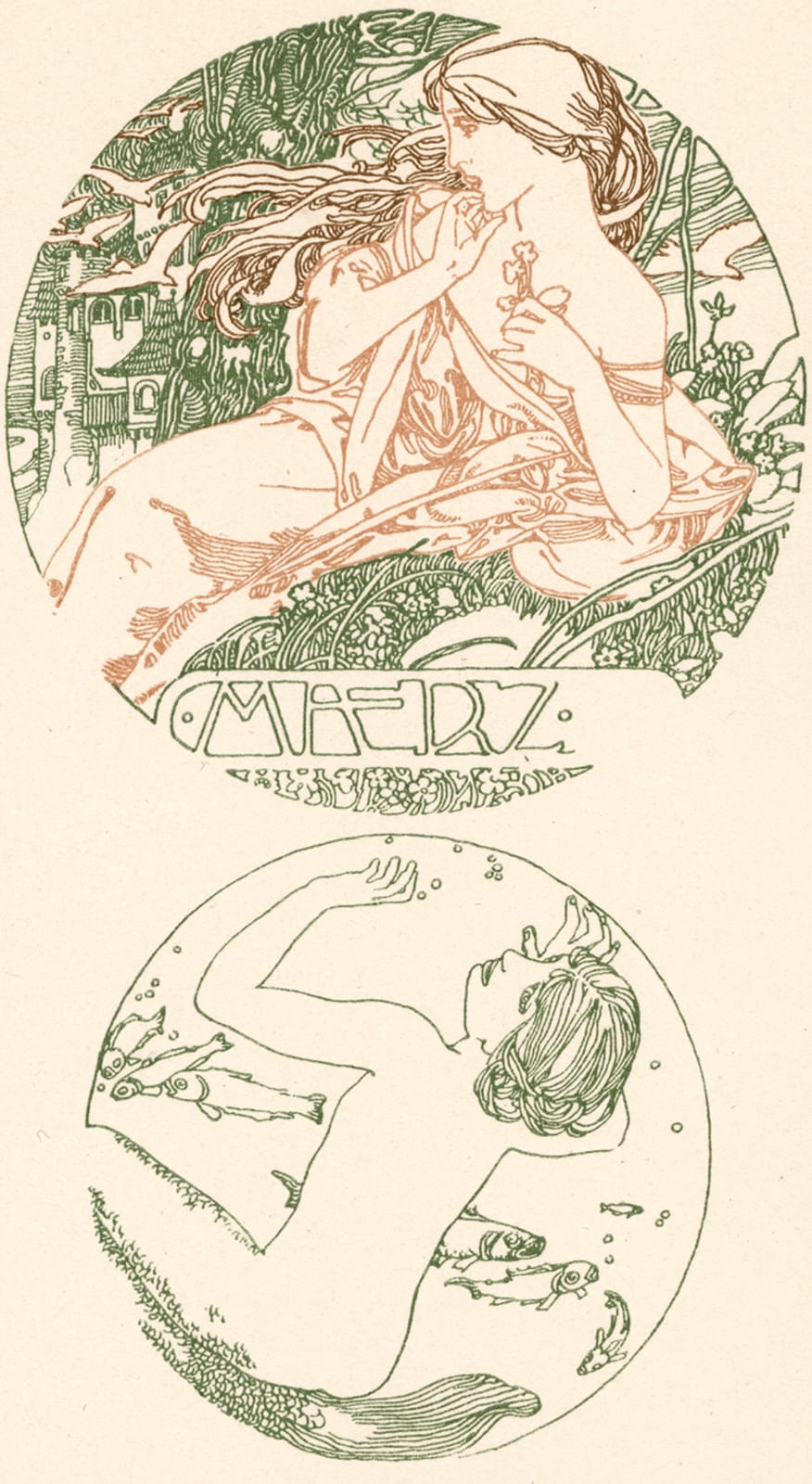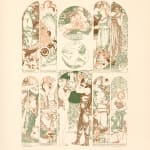Carl Otto Czeschka Czech, 1878-1960
1895-1900
Further images
ALLEGORIEN-NEUE FOLGE, 1897, published by Gerlach & Schenk Verlag fur Kunst und Gewerbe, Vienna, was a serial publication that began as Allegorien und Embleme in 1882. A sourcebook of inspiration made for and by young Viennese artists became something of a galvanizer of the modernist movement in Vienna with its new series issued in 1897. Its publisher, Martin Gerlach, plucked young artists and even art students who were exploring the newest techniques in drafting and graphic design to contribute to his publication. This was the beginning of a long-standing relationship. In the forward to the 1897 edition, Gerlach, expounds upon the new approach which consciously shifted away from historicism rooted in the conservative Academy. Instead, the artists were encouraged to explore new subjects and new ways to present them. More unconventional subjects such as: Wine, Love, Song, Music and Dance; Arts and Sciences; the Seasons and their corresponding activities, sports and amusements, breathed fresh, modern life into the allegorical genre. Specific topics that were explored ranged from Electricity and new concepts of Work and Time to Bicycle Sport and the Graphic Arts.
Essentially, the publication served as a portable forum for sharing and disseminating new ideas. Two contributors, a young Gustav Klimt and an even younger Koloman Moser, likely met through their involvement with Allegorien and found themselves to be like-minded artists. As a result, the two allied with other artists and architects in a dramatic and formal break with the established, conservative state-run arts (Kunstlerhausgenessenschaft) to found the Vienna Secession the very next year in 1898. Klimt became the Secession’s first President; while Moser, in 1903, expanded the group from a solely exhibition-based focus to include a workshop by co-founding the Wiener Werkstatte. Gerlach went on to publish some issues of the Secession’s journal called Ver Sacrum as well as postcards designed by its members.
The Viennese art critic, Joseph August, called Gerlach the “Fuhrer der Moderne” (Leader of Modernism). The new 1897 series, featuring its innovative and modern art plates, is an important art historical document as it played a significant role in helping shape the avant-garde art movement in Vienna which exploded onto the scene with the formation of the Vienna Secession in 1898. Individually, the plates are important works; they are noteworthy for their stylistically and thematically modern approach. These plates offer some of the earliest examples of Viennese avant-garde and Secession artists’ published work.









